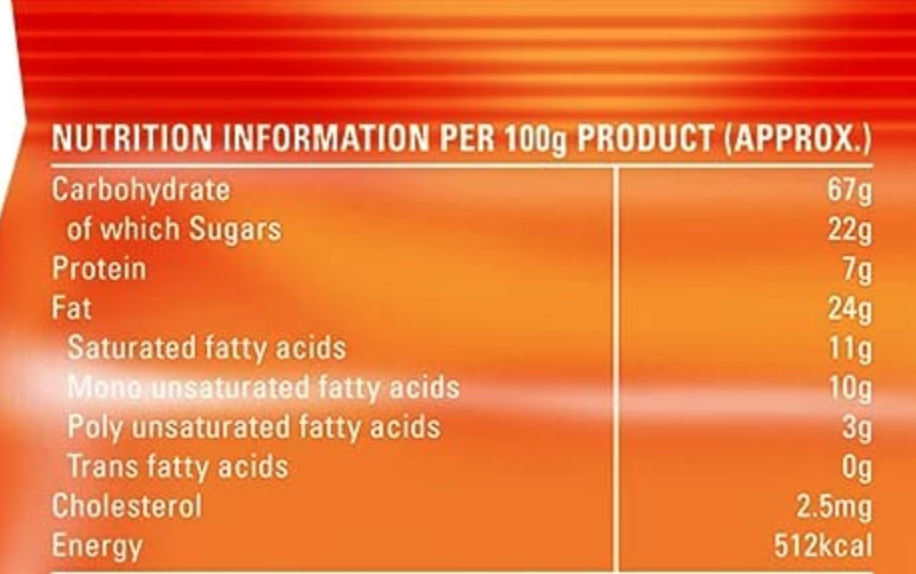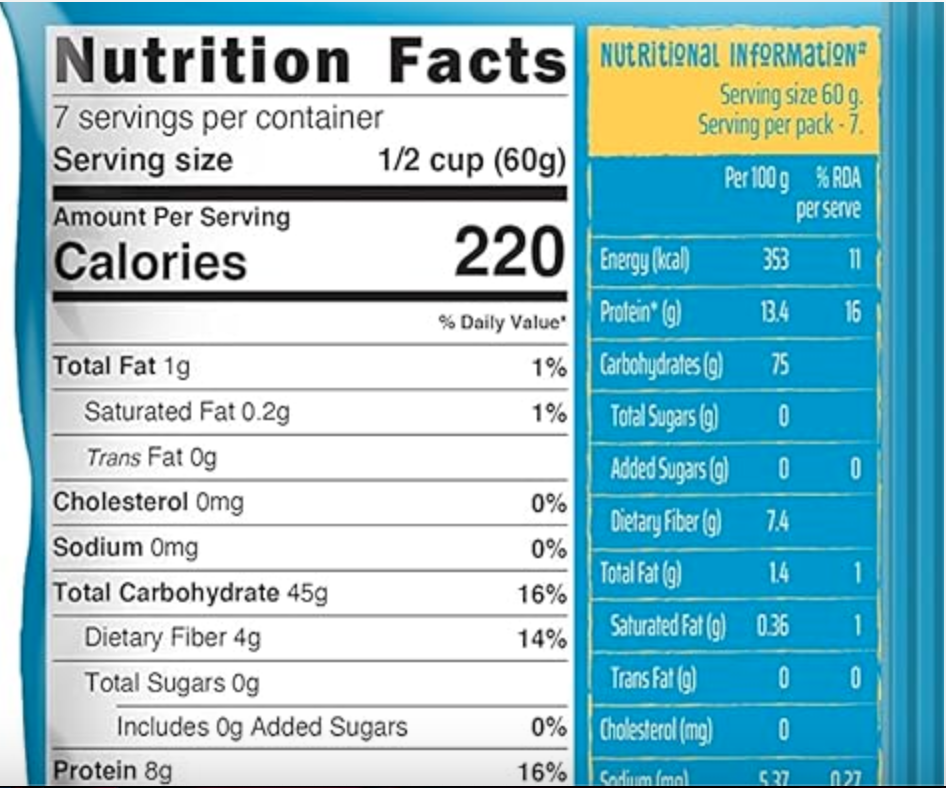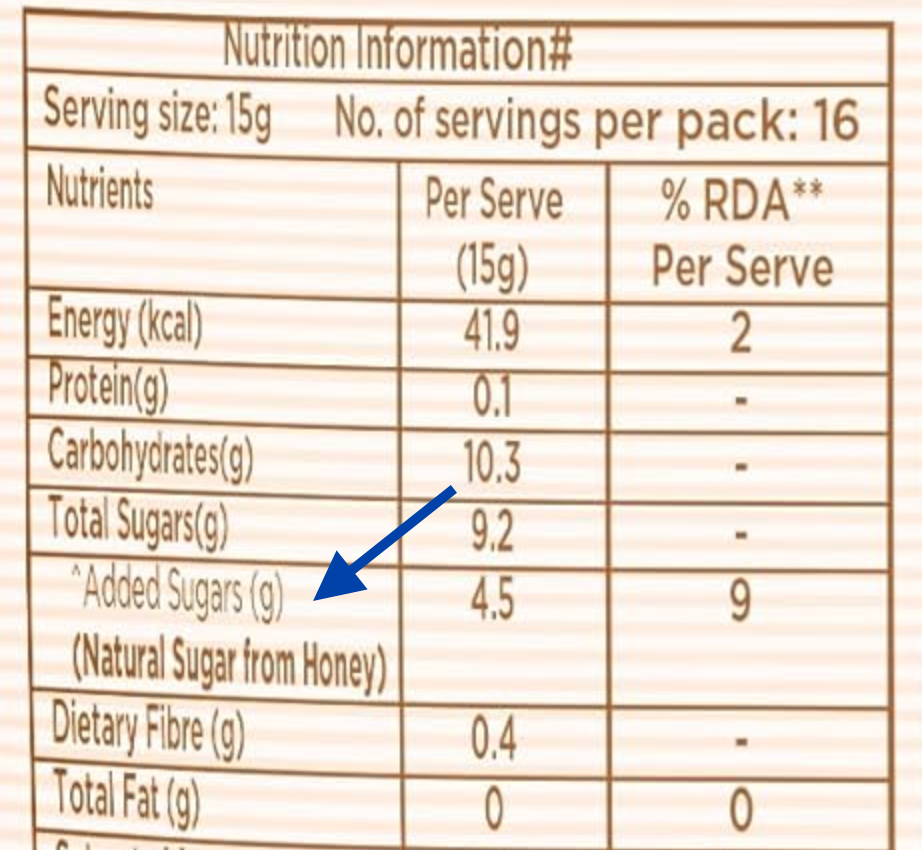In a world filled with packaged foods, nutrition labels are your best friend — if you know how to read them correctly. Whether you’re trying to eat healthier, manage a health condition, or just understand what you’re putting in your body, knowing how to decode a nutrition label is a must. Here’s a simple, pro-level guide to help you make smarter choices.
1. Read the Serving Size Carefully
Usually when we look at the nutrition labels for a 500g product, the nutritional elements like energy, carbohydrates, sugar, fat are listed per 100 grams or whichever is applicable to a particular product. At first glance, it always seems that the nutrition element is less in grams. The nutrition facts listed are per serving, not per package. Many snacks or drinks contain multiple servings — and if you eat or drink more than one serving, you’ll need to multiply the numbers accordingly.
Pro Tip: If a 1000g of biscuit packet says per 100g the sugar content is 22g, it means if you finish off the whole packet you would be consuming 220g of sugar.

2. Check the Calories

Not all food packets list the calories in the product but some do. Calories tell you how much energy you get from a serving. This matters whether you’re trying to lose weight, maintain it, or fuel your workouts.
- Low: 40 calories or less per serving
- Moderate: 100 calories
- High: 400 or more
Watch out for: “Low-fat” foods that are still high in calories due to added sugars.
3. Know Which Nutrients Must Not Be in High Quantity
The elements of nutrition are categorised as macronutrients and micronutrients. While macronutrients are carbohydrates, proteins and fats, micronutrients are vitamins and minerals. Sugar is a subcategory of carbohydrate macronutrients. Pay close attention to:
- Saturated Fat – Too much increases heart disease risk.
- Trans Fat – If Trans fat is not 0 stay away from that food product. It is the most harmful type of fat. Even 0.5g per serving can add up.
- Cholesterol – Keep it low if you have heart health concerns.
- Sodium – Aim for less than 2,300 mg/day (or 1,500 mg for certain health conditions).
- Carbohydrates – This is mostly empty calories if the ingredients are not too expensive or ‘whole’ in nature. Watch out for sugar, that is the culprit that adds up layers of visceral fat in your body and makes you lethargic as well.
Pro Tip: Foods high in these are often processed or fast foods.
4. Prefer A Balanced Presence of Micronutrients
Vitamins and minerals come under micronutrients. They are not required in large quantities, however, their presence is essential for optimum growth and development. Look for higher percentages of:
- Dietary Fiber – Helps with digestion and satiety.
- Protein – Essential for muscle repair and energy.
- Vitamins & Minerals – Especially Vitamin D, Calcium, Iron, and Potassium.
Quick Guide:
- 5% Daily Value (DV) or less = low
20% DV or more = high
5. Watch Out for Added Sugars

This is a big one. Natural sugars (like those in fruit and milk) are okay, but added sugars (like high-fructose corn syrup or cane sugar) add empty calories.
The American Heart Association recommends:
- No more than 25g/day for women
- No more than 36g/day for men
Look for: The line that says “Includes Xg Added Sugars.” as shown in the picture above.
6. Ingredients List: The Real Story
The table that shows you nutrition per serving is what we spoke about above. However, you must also read the ingredients names that are listed in the packet. These are always listed in descending order by weight. The weight may or may not be mentioned, however, just by seeing the sequence in which they are listed you can understand what the product is mostly made of.
Red Flags:
- Sugar (or its many names) near the top
- Long, unpronounceable ingredient lists
- Artificial additives and preservatives
Pro Tip: The fewer ingredients, the better.
7. Compare Similar Products
In the supermarket aisles while shopping it is easy to compare products based on their nutritional, calorie and ingredient information. Use labels to compare brands. One cereal may have double the sugar of another. One yogurt might offer more protein and less fat than a competitor. It is often a good practice to compare the products and make a sound choice of your purchase that gives you control over your choice.
Finally, I would like to conclude that reading nutrition labels doesn’t have to be intimidating. Once you get the hang of it, it’s a powerful tool for making informed food choices that support your health goals. Like any habit, it gets easier with practice — and soon, you’ll be scanning labels like a true pro.
